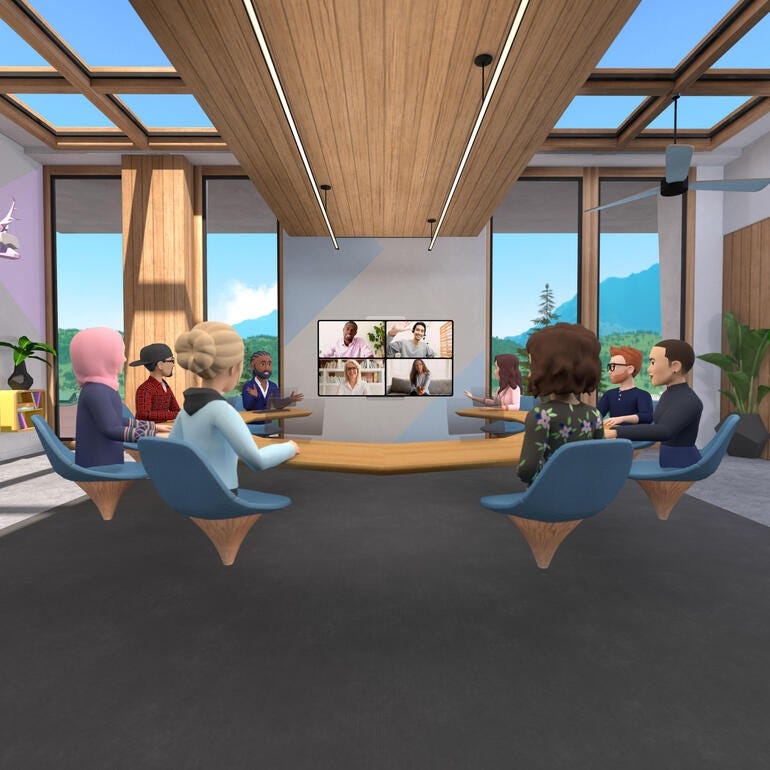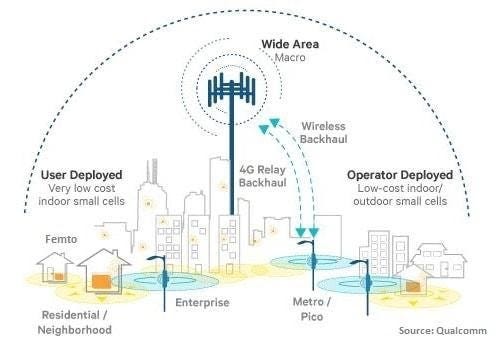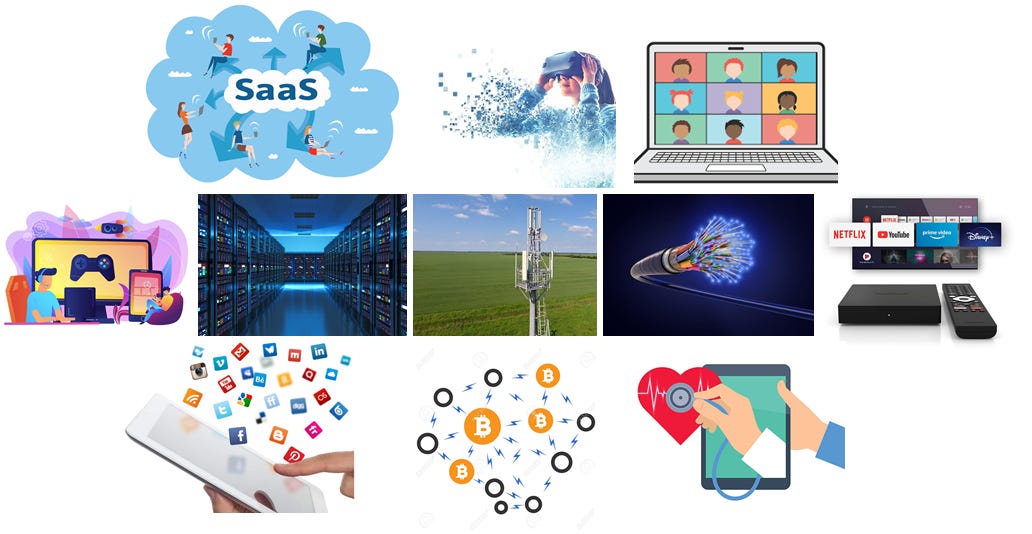Digital vs Physical - The Backbone of the Internet
the cloud is built on the ground
Last time, the the absurdity of the meme. Today, in partnership with @iodigitalindex’s BYTE ETF Index , I will provide a high-level overview of the digital infrastructure ecosystem and why it’s important for a web3 world.
If you’re already subscribed, thank you! If you’d like to subscribe, please do so here:
YouTube/podcast up now
Quick note: I know. The market is MOVING today. I’ll have some thoughts on Friday.

BROUGHT TO YOU BY:
I’ll see you in the… Metaverse.
There is increasing noise around the Metaverse, around web3, around crypto, and the future of our online world. It’s promised to be the future of how we interact socially, how we work, how we LIVE - and the big question is -
What makes the Metaverse?
What sends my newsletter to you? What allows us to hop on Zoom to chat with one another? What allows Facebook to reinvent itself into Meta?
What is this next iteration of the Internet?
The Metaverse
What is the metaverse, and what role will it have in the world moving forward?
It’s an interesting combination of a lot of different things, with the goal to change how we buy, how we work, and how we play. Matthew Ball describes the Metaverse as:
The Metaverse is an expansive network of persistent, real-time rendered 3D worlds and simulations that support continuity of identity, objects, history, payments, and entitlements, and can be experienced synchronously by an effectively unlimited number of users, each with an individual sense of presence
It’s a bit different than our web2 experiences which are flat and non-interactive - the Metaverse is immersive.
The key thing here is presence - you are really *there*. You aren’t in a Zoom sitting in your kitchen, you’re at a table in the Metaverse with all your other coworkers. A few of the variables:
Persistent: It never “pauses” or “ends,” it just continues indefinitely
Open Participation: Everyone can be part of it, no gatekeeping
Value Economy: Sense of “value” or currency has to exist
Duality: Spans both the digital and physical worlds
Interoperability: Allows transfer of assets across worlds (i.e. use a Fortnite gun in another game)
Active Contribution: Ability for creators to build and expand the universe
And most importantly, you have to interact with real people in order for it to be the Metaverse. So your Neopets game isn’t the Metaverse, but a video game where you can “create and explore with other people who aren’t in the same physical space as you” is the Metaverse.
Facebook recently went in all-in on Meta, which signaled a few key things:
The Metaverse is coming (whether it’s enterprise-owned or not remains a question)
Zuck very clearly wants to own the operating system behind this - he wants to own the end-to-end user experience, from the VR goggles to the Horizon social platform that Meta is building.
There is going to have to be increasing focus on the Metaverse moving forward because if Facebook is throwing the entire towel into the ring - that means other brands (such as Microsoft) are sure to follow
The Metaverse is still being built out (it actually doesn’t really exist yet) but there are a few interesting applications, as I wrote about with my friend Kushaan here:
Education: Rather than every kid sitting in a lecture hall learning the same way from the same professor, we can have immersive, interactive learning experiences. Kids learning from the mode they feel most comfortable in.
Social: Rather than physical barriers, we can have closer interactions. We could be “sitting” in the same room as we write this piece together, rather than a 5-hour car ride apart! That’s powerful for collaboration and connection, and will remove friction from idea generation and execution.
Experiences: If Travis Scott is any indication, virtual experiences can leverage larger audiences and transcendent physics to create the next generation of entertainment. Concerts are one example - imagine broadway shows and open mics as well!
Commerce: Imagine going to a virtual mall within Decentraland to try on a pair of virtual shoes and some jeans, then ordering real ones to be sent to your home. Imagine being a brand that can crowdsource new ideas from creators within the Metaverse. The fact that many of these worlds also have their own currency means value can be generated in many ways – even real money isn’t a detriment to increasing your worth within a Metaverse.
It requires us to enter a digital physical world with AR/VR tools at the moment, but it promises to be an immersive digital experience - digital.
Very digital.
But what is the Metaverse itself built on? What is the connection to the physical?
The Physical Backing
There has to be a physical layer of the Internet. We can talk all we want about the ~metaverse~ but there still has to be a convergence of physical and digital realities.
Digital infrastructure: These are the physical assets that support the Internet. Think transmission tech, fiber optic cables, data centers etc.
The hidden truth: We often times don’t think about how the WiFi gets into our homes, or how tech companies are able to run their platforms. Digital connectivity is indistinguishable from magic in this environment.
We have digital supply chains, just like we have physical supply chains.
There are a lot of interconnected pieces - and now with the Metaverse and the pressure to be the FASTEST, digital infrastructure is experiencing the same pressure as the physical.
And of course, building a supply chain requires a lot of investment. The pandemic brought forward 5 years of growth in e-commerce - and it’s completely changed the way that we interact with each other. It’s everything from Cloud, SaaS, online gaming, social media, remote work, streaming, AR/VR, and artificial intelligence- all of it relies on a physical backbone.
Digital infrastructure is the backbone of the entire Internet. It’s everything from data transmission technology to hardware to cell towers. The biggest thing is that a DIGITAL reality requires a physical reality - it needs to have the speed, the coverage, the capacity to build this future of the Internet. Developing this infrastructure has been a major investment trend for the past two decades. If Zuck has his way, it will be for the next two as well.
As Microsoft wrote in a recent note:
“The cloud is a globally interconnected network of millions of computers in data centers around the world that work together to store and manage data, run applications and deliver content and services.”
The cloud is built on the ground.
Data Centers
These are massive warehouses that hold all the servers for the tenants of a building - they pay rent based on how much space they need and power they use. They are a one-stop shop for everything - a physical space to host the digital data.
Big businesses often times have their own data centers (Google, Amazon, and Meta). Those same “hyperscale” cloud players also frequently lease data center space and power from third party providers. Data centers are EXPENSIVE to build, and owners a lot of pricing power over those that use them.
They store our information - and the information of the entire Internet. Microsoft is placing a lot of focus on them as they build out their own version of the Metaverse. They are looking to develop cloud software and database tools to run inside their data centers - allowing other companies to tap into the Microsoft’s Azure and Office 365.
And everyone is going to have to join Microsoft on this journey - the data centers we have today and the broadband networks are not going to be able to support the demands of the Metaverse.
As Jerry Heinz, the co-founder of Ball Metaverse Research Partners, said:
“It really boils down to our old friends: latency, bandwidth and reliability.” Everything on the Metaverse is going to be HIGH-DEF - we can’t even get our Zoom screens to keep up with us right now. The lag avoidance is going to require really strong infrastructure - beginning with data centers.
Also, the Metaverse is going to have to learn how we interact. Fortnite predicts where players might go next in order to avoid a lag - the new level of interactions in this digital, physical reality will have to be calibrated to the same. Data centers are necessary for this.
Cell Towers
These are the bat signal towers. They rent space to telecom companies. They also have limits on the amount of tenants that can use the space (giving the towers a lot of pricing power) and, because they are eye-sores, most localities don’t want more of them, making it hard to build a competing tower down the road.
These send out radio waves out to cellphones and other devices, which enable us to use them. As more and more people get access to cell phones, these are going to become increasingly important.
They are already underbuilt because of ~policy~, but capacity constraints are continuing to get worse. There are really two main options:
Build more cell towers
Use even more digital infrastructure tools like nodes or small cell networks.
The leases are 5-10 years long - and in the rapidly evolving digital world, that might as well be 100+ years. And telecom providers know that they have to get in front of the Metaverse - as Bloomberg described, several of them are already rolling out options for users:
China Mobile: The world’s largest carrier by subscribers unveiled the Mobile Cloud VR, “a platform where users can watch 360-degree content” including concerts and sports events.
SK Telecom: A leading South Korean carrier launched Ifland, a metaverse platform “which allows users to socialize in different virtual environments via avatars.”
Verizon: The US carrier partnered with the NFL to “develop virtual Superbowl experiences” like watching 3D replays in 360 degrees.
Semiconductors
These are the backbone of the products that we use! They are also used within data centers, and as demand across the board increases for 1) products 2) storage and 3) data processing, we can expect more price pressure on semis.
There is currently a massive shortage in semiconductors - as they are the brain of all the electronics that we use. They are in cars, toothbrushes, iPhones - everything. As I wrote in my semiconductors piece:
A lot of tech companies are starting to build in-house (Apple with the M1 instead of Intel, Tesla’s Dojo chip, etc) and there are plans for TSMC and Intel to scale and build in American factories (this will take a lot of time), but it’s still a bit messy and confusing as to what will happen.
The shortage isn’t expected to be solved until 2023ish, and I imagine it will be solved at some point (necessity breeds innovation) - but it’s a vulnerability in the system that could put a lot of the everyday products we use into a crunch.
Semiconductors are probably the most salient example of the importance of digital infrastructure - if we don’t have these, we don’t have the Internet.
What does it look like all together?
RP1 is building a Metaverse platform - and they have 4 key phases that tie into the digital architecture described above. This is just an example of all the steps that go into this (not an ad, just a really well done example):
Core Networking Architecture
Scalable Server: Allow for infinite clients in a single world
Real-time events: These use “need to know” principles to address the latency problems addressed above
Persistent: The world needs to be in a constant state of change and all change will be persistent
People on Servers
Core server cluster: a single cluster supports 2 million users, and the clusters need to work together!
Hardware/infrastructure: servers, networking hardware, provisioning, and software configuration
Client Interface: the Metaverse needs to be accessible from ANY device
Foundational Layer
Database: HUGE amounts of data collected that needs to be stored, backed up, secured, replicated, and restored - and have retrieval functionality
Assets: All the components that will exist in the metaverse
User interface components: menus, gestures, iconography, and internationalization so everyone can have access to the Metaverse
Audio: Voice input and prerecorded text!!!
Services Layer
Blockchain: this requires speed of transactions, hardware, and integrity
User Account Authentication: storing the $$$ and verifying ownership
Administration system: customization and oversight of the system
BROUGHT TO YOU BY:
Picking the winners and losers of the future is hard. Bitcoin vs Ethereum vs Solana vs Doge? What will the metaverse look like? Will Disney+ beat Netflix? What about 5G? Can Microsoft Azure beat AWS?
Hard.
The BYTE 40 works to solve this.
Rather than picking winning and losing applications, it focuses on assets that grow with general data consumption: the digital infrastructure that transports and stores data.
Assets such as data centers, fiber connectivity, last mile broadband, and mobile towers make up the backbone of the internet. As data consumption grows, so does the importance of high performing infrastructure to transport and store that data. The BYTE Index uses an algorithm balancing growth, soundness, and value to select its 40 constituents.
Here is the thesis:
Data consumption will grow for years and years
Even as we can be nearly certain our reliance on data keeps growing, it’s hard to pick which applications “win”
Digital infrastructure is a way to simplify the bet: “we will want to consume more, faster, better”
The BYTE IO Digital Infrastructure Index filters for the best-positioned digital infrastructure companies in the world. As end-user performance expectations grow, the importance of these assets grows with it.
* This is not investment advice. See www.iodigitalindex.com
Final Thoughts
Digital infrastructure is a key component to how we interact with the online world. All the bets on web3, on the Metaverse, on crypto, etc have the sole requirement of this physical backing of cell towers, data centers, semiconductors, fiber connectivity, etc.
Data hardware is going to have to evolve alongside digital infrastructure, so this isn’t a static space - it’s growing as fast as the processes it supports!
Fiber, towers, data centers, etc will all play a very important role - but you have the physical aspect of VR and AR too that have to catch up. The train is moving quickly - arguably, we are still building the rails as it moves downs the tracks.
As Matthew Ball concludes in his Part IV Metaverse Primer:
Billions of dynamically arrayed processors will power the deep compute cycles of even the largest industrial customers and provide the ultimate and infinite computing mesh that enables the Metaverse.
The digital still relies on the physical!
Disclaimer: This is not financial advice or recommendation for any investment. The Content is for informational purposes only, you should not construe any such information or other material as legal, tax, investment, financial, or other advice.






